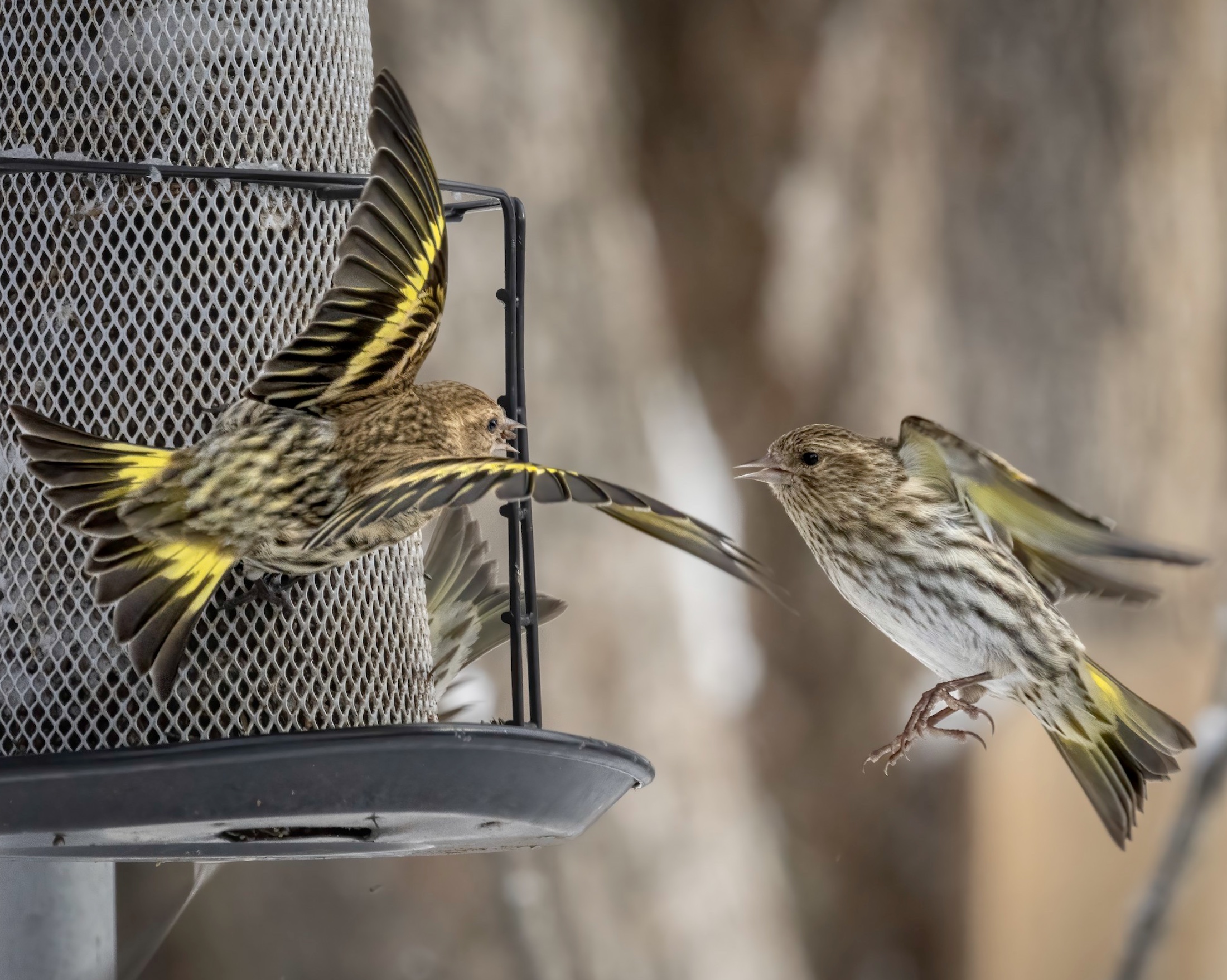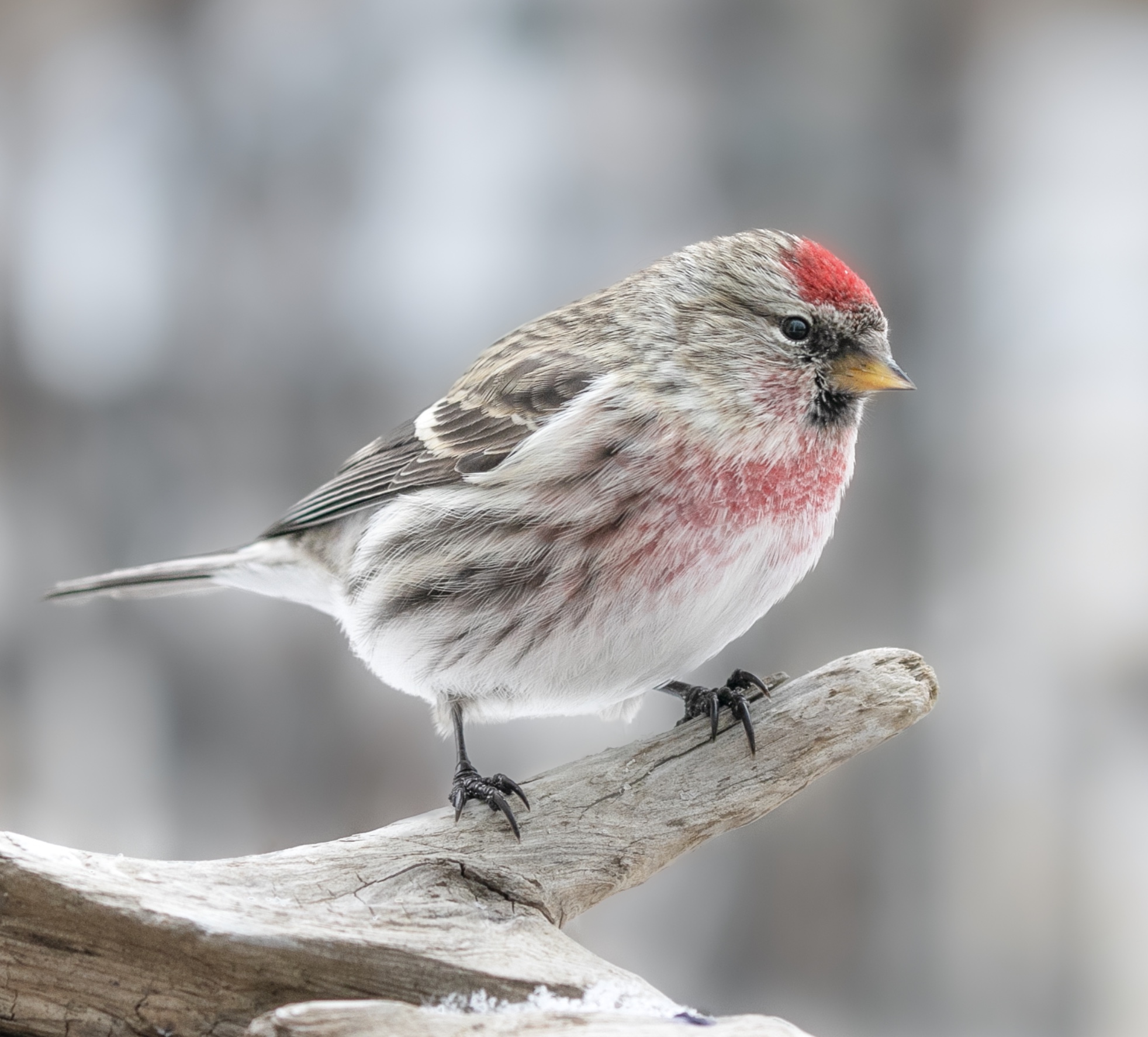By Kerrie Wilcox, Great Backyard Bird Count Coordinator and Canadian Lead for Project FeederWatch, Birds Canada
Birders participating in the 2022 Great Backyard Bird Count from February 18-21 created an outstanding snapshot of bird populations around the world. Thank you to each bird enthusiast who took part and shared your observations through the Merlin Bird ID app or eBird!
Global participation*
Species
Checklists
Participating Countries
*Numbers may change as the final checklists are added through eBird.
Participation in Canada
Despite bitter cold and high winds in many regions, Canada was well represented! At the time of writing, participants in Canada had entered 33,797 eBird checklists and 23,000 Merlin submissions, logging observations of 256 species! To see checklist and species numbers in your province or territory, click on “Explore”.
Bird highlights
Canadians found lots of “irruptive” species this year due to a poor cone and seed crop in Boreal Forests across Canada. Irruptive birds (such as Pine Siskins, Common Redpolls, Purple Finches, Red-breasted Nuthatches, and Evening Grosbeaks) respond to poor cone and seed crops up north by moving south in search of food.

Pine Siskin Photo: Julie Blondeau, Sainte-Anne-des-Plaines, QC/GBBC 2022/Macaulay Library
British Columbia
In British Columbia, a flock of 10,000 American Crows was observed heading to roost at dusk in Metro Vancouver. During winter, crows usually leave their territory in late afternoon and join others, converging from across a wide area to roost. Noteworthy early migrants include a Say’s Phoebe in North Okanagan and a Violet-green Swallow in Salmon Arm Bay (both rare for February). A Eurasian Skylark, which has a small and declining population and is rarely seen in Canada, was recorded near Victoria, BC.
Alberta
Albertans recorded high numbers of irruptive Common Redpolls this year. A flock of at least 650 was recorded near Calgary. Redpolls move out of Boreal Forests in response to cone and seed crops. Other highlights included a Gyrfalcon as well as a rare overwintering American Wigeon in Henderson Lake. At this time of year, the wigeon should have been in central U.S., South America, or the western Caribbean.
Saskatchewan
In Saskatchewan, large flocks of Bohemian Waxwings were reported near Saskatoon – one flock had 3000. High numbers of irruptive Common Redpolls were reported in Prince Albert along with flocks of Evening and Pine Grosbeaks in Melfort.
Manitoba
Manitoba also had large flocks of Common Redpolls – high counts were 500 in Eastern Manitoba. The GBBC is continuing to record the Eurasian Collared-Doves expansion into Manitoba – a high count of 21 was reported in Portage la Prairie. Another cool highlight was a Northern Cardinal in Winnipeg – far north of its typical range. This species is expanding northward in Canada probably in response to warmer winters. Ten Snowy Owls were reported in Steinbach.
Ontario
Participants in Ontario submitted around 13,000 checklists. As in previous years, they reported good numbers of overwintering waterfowl including flocks of 3500 Long-tailed Ducks in Lambton, 3000 Common Goldeneye in Essex, and 2500 Tundra Swans in Chatham-Kent. Some interesting sightings included a group of 6 early-migrating Eastern Meadowlarks in Chatham-Kent and 5 early Killdeer in Lambton. A surprising Golden-crowned Sparrow was counted in Scarborough. This bird should have been in southern British Columbia or the western U.S.
Québec
A mega rarity was reported in Québec – a Brambling. This beautiful bird is native to Scandinavia and Russia. And surprisingly a western species, a Varied Thrush, was spotted in Portneuf. This species of thrush is typically found on the western coastline of BC and the U.S. A large flock of 2500 Common Eiders was reported in Point-St. Pierre, Québec.
Nova Scotia
Highlights from the Maritimes included an overwintering Yellow-throated Warbler in NS. This bird usually winters in southern Florida, Cuba, Bahamas, and Central America. A rare winter Brown Thrasher was also spotted in Lunenburg, NS.
New Brunswick
In New Brunswick, 1300 Herring Gulls were recorded near White Head Island, and a rare winter Lincoln’s Sparrow was recorded, also at White Head Island.
Prince Edward Island
Prince Edward Islanders saw more American Robins this year than is usual, including a flock of 30 robins near Queens. While many robins migrate in winter, some stay. Some robins may also be migrating shorter distances, which could be related to warmer winters. Twenty-five years of observations gathered during the Great Backyard Bird Count will help shed some light on changes to the American Robin’s winter populations in Canada.
Newfoundland and Labrador
A Tufted Duck is a rare, but regular, winter visitor along the east coast; a flock of 18 was recorded on the Avalon Peninsula. A Cape May Warbler was counted in St. John’s (this bird should be in the West Indies in winter).
The North
Yukon Territory participants submitted 62 checklists. Some cool sightings included an American Three-toed Woodpecker in Marsh Lake and a Boreal Owl in Whitehorse. In Northwest Territories, a group of 25 Willow Ptarmigan were spotted in Fort Smith and a Snowy Owl in Cambridge Bay, Nunavut.

Common Redpoll Photo: Aaron Roberge, Calgary, AB/GBBC 2022/Macaulay Library
Keep Counting with eBird Canada!
Please keep observing and reporting birds! Just go directly to eBird.ca to submit checklists using the same username and password you used for the Great Backyard Bird Count. The data entry process is the same. You can submit sightings on eBird from anywhere in the world at any time of the year!
See you next year
The next Great Backyard Bird Count will take place February 17-20, 2023.
Thanks to our sponsor Wild Birds Unlimited for helping to make the GBBC possible.
